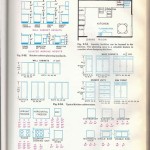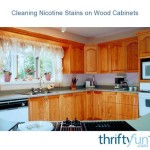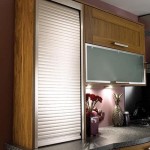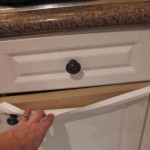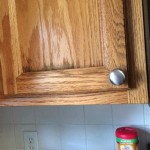Best Soft Close Hinges For Kitchen Cabinets: A Comprehensive Guide
Kitchen cabinets play a crucial role in both the functionality and aesthetics of a kitchen space. Beyond the style of the cabinet doors, the hardware responsible for their smooth and silent operation is equally important. Soft close hinges, in particular, have gained immense popularity due to their ability to prevent slamming doors, reduce noise, and extend the lifespan of cabinets. Selecting the best soft close hinges for kitchen cabinets requires careful consideration of various factors, including hinge type, material, adjustability, and installation requirements. This article provides a comprehensive guide to help homeowners and contractors make informed decisions when choosing soft close hinges for their kitchen cabinet projects.
The primary function of soft close hinges is to decelerate the closing motion of a cabinet door in the final inches before it fully closes. This controlled closing action prevents the door from slamming shut, which can be disruptive, especially in open-concept living spaces. The soft close mechanism typically involves a hydraulic or pneumatic damper built into the hinge body. This damper absorbs the energy of the closing door, ensuring a gentle and quiet closure. Furthermore, by preventing slamming, soft close hinges protect the cabinet frames and doors from the wear and tear associated with repeated impacts. This can significantly extend the overall lifespan of the kitchen cabinetry.
Understanding Different Types of Soft Close Hinges
Soft close hinges are available in a variety of styles and configurations to accommodate different cabinet designs and installation requirements. The most common types include face frame hinges, frameless (or European-style) hinges, and inset hinges. Each type is designed for specific cabinet constructions and offers unique features and benefits.
Face Frame Hinges: Face frame cabinets are characterized by a solid wood frame that surrounds the cabinet opening. Face frame hinges are specifically designed to attach to this frame. These hinges typically feature a mounting plate that screws directly onto the face frame, providing a secure and stable connection. Face frame hinges are often adjustable, allowing for fine-tuning of door alignment and reveal. Several sub-types of face-frame hinges exist including variable overlay, half overlay, and full overlay hinges, each designed for doors that cover varying amounts of the cabinet face frame.
Frameless (European-Style) Hinges: Frameless cabinets, also known as European-style cabinets, lack the traditional face frame. Instead, the cabinet doors attach directly to the cabinet box. Frameless hinges, often referred to as European hinges, are designed to mount directly to the inside of the cabinet box and the back of the door. These hinges typically require a 35mm diameter hole (sometimes 40mm) to be drilled into the back of the door. Frameless hinges offer a clean, minimalist look and provide greater accessibility to the cabinet interior. They are also highly adjustable, allowing for precise alignment and gap control.
Inset Hinges: Inset cabinet doors are designed to sit flush with the cabinet frame when closed, creating a seamless and integrated appearance. Inset hinges are specifically designed to accommodate this design. These hinges are typically more complex than face frame or frameless hinges, often requiring precise mortising and fitting. They are available in both traditional and concealed styles, with concealed inset hinges offering a cleaner, more modern look.
In addition to these primary types, other less common hinge styles exist, such as wrap-around hinges, self-closing hinges (which may or may not incorporate soft close mechanisms), and specialty hinges designed for specific applications, such as corner cabinets or bi-fold doors. Understanding the different types of soft close hinges and their respective applications is crucial for selecting the appropriate hinge for a particular cabinet project.
Key Features and Considerations When Choosing Soft Close Hinges
Beyond the type of hinge, several key features and considerations should be taken into account when selecting soft close hinges for kitchen cabinets. These include the hinge material, the soft close mechanism itself, the adjustability of the hinge, the ease of installation, and the overall durability and longevity of the hinge.
Hinge Material: The material of the hinge directly affects its durability and resistance to corrosion. The most common materials used for soft close hinges are steel and stainless steel. Steel hinges are typically less expensive but may be more susceptible to rust and corrosion, especially in humid environments. Stainless steel hinges offer superior corrosion resistance and are ideal for kitchens and bathrooms where moisture is prevalent. Some hinges may also feature a combination of materials, such as a steel body with a stainless steel mounting plate.
Soft Close Mechanism: The effectiveness of the soft close mechanism is a critical factor to consider. Some soft close hinges utilize a hydraulic damper, while others use a pneumatic damper. Hydraulic dampers generally provide a smoother and more consistent soft close action, while pneumatic dampers may be more affordable. The quality of the damper also affects the performance of the hinge. High-quality dampers will provide a more consistent and reliable soft close action over time. It is essential to look for hinges with dampers that are designed to withstand repeated use and temperature fluctuations.
Adjustability: Adjustability is a crucial feature for ensuring proper door alignment and function. Soft close hinges typically offer three-way adjustability, allowing for adjustments in height, depth (overlay), and side-to-side alignment. These adjustments can be made using simple screws or levers. The adjustability of the hinge allows for fine-tuning of the door position, ensuring that the doors are properly aligned with the cabinet frame and that there are no gaps or uneven reveals. Adequate adjustability can compensate for minor imperfections in the cabinet construction or door installation.
Ease of Installation: The ease of installation is another important consideration, especially for DIYers. Some soft close hinges are designed for easy installation with minimal tools, while others may require specialized tools and expertise. Face frame hinges are typically easier to install than frameless hinges, as they simply screw onto the face frame. Frameless hinges require precise drilling of holes in the cabinet box and door, which can be challenging for inexperienced installers. It is essential to choose hinges that are appropriate for the skill level of the installer and to follow the manufacturer's instructions carefully.
Durability and Longevity: The durability and longevity of the soft close hinges are important factors to consider, as they will be subjected to repeated use over many years. Look for hinges that are made from high-quality materials and that are designed to withstand heavy use. The weight capacity of the hinge should also be considered, especially for larger or heavier cabinet doors. It is also important to check the manufacturer's warranty and reputation for quality and reliability.
Installation Tips and Best Practices
Proper installation is crucial for ensuring the optimal performance and longevity of soft close hinges. Whether installing new hinges or replacing existing ones, following these installation tips and best practices can help ensure a successful outcome.
Preparation: Before starting the installation, it is essential to gather all the necessary tools and materials. This typically includes a screwdriver (both Phillips and flathead), a drill with appropriate drill bits (especially a 35mm or 40mm Forstner bit for frameless hinges), a measuring tape, a pencil, and a level. It is also important to read the manufacturer's instructions carefully before beginning the installation.
Marking and Drilling: For frameless hinges, precise marking and drilling of the hinge cup holes in the back of the door is essential. Use a template or measuring tape to accurately locate the position of the holes. Use a Forstner bit to drill the holes to the correct depth, being careful not to drill through the door. For face frame hinges, marking the screw locations on the face frame is equally important to ensure proper alignment.
Alignment and Adjustment: After installing the hinges, it is crucial to properly align the doors. Use the adjustment screws to fine-tune the height, depth, and side-to-side alignment of the doors. Ensure that the doors are flush with the cabinet frame and that there are no gaps or uneven reveals. It may be necessary to make several adjustments to achieve the desired alignment.
Testing and Troubleshooting: After completing the installation and adjustment, test the soft close function of the hinges. The doors should close smoothly and quietly without slamming. If the doors are not closing properly or if there is excessive friction, double-check the alignment and adjustment of the hinges. If necessary, consult the manufacturer's instructions for troubleshooting tips.
Additional Considerations: When replacing existing hinges, it is important to ensure that the new hinges are compatible with the existing cabinet construction and door style. Also, consider the overlay of the door (the amount that the door covers the cabinet frame) when selecting hinges. Using the incorrect overlay can result in improper door alignment and function.
By carefully considering the type of hinge, the features and considerations outlined above, and following these installation tips and best practices, homeowners and contractors can select and install the best soft close hinges for their kitchen cabinets, ensuring smooth, quiet, and long-lasting operation.

What Are The Best Kitchen Cabinet Hinges Titus

The Best Hinges For Cabinets And Furniture Maxave

The Best Hinges For Cabinets And Furniture Maxave

Top Quality Full Overlay 35mm Soft Close Hinges Kitchen Cabinet Cupboard Door

The Best Hinges For Cabinets And Furniture Maxave

Benefits Of Soft Close Self Closing Hinges For Your Kitchen

Top 5 Best Soft Close Cabinet Hinges You Can Buy Right Now 2024

The Best Hinges For Cabinets And Furniture Maxave

The Ultimate Guide To Kitchen Cabinet Hinges

Everbilt 35 Mm 110 Degree 3 4 In Overlay Soft Close Cabinet Hinge 1 Pair 2 Pieces H70300e Np Cp The Home Depot
Related Posts


